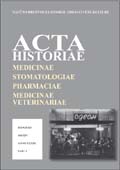Život na gradskoj margini: Zdravstveni, socijalni i prehrambeni aspekti življenja u Beogradu 1919–1941
Life on the margins of the city: The health, social and nutritional aspects of life in Belgrade 1919-1941
Author(s): Vladimir AbramovićSubject(s): Health and medicine and law, Family and social welfare, Rural and urban sociology, Interwar Period (1920 - 1939)
Published by: Naučno društvo za istoriju zdravstvene kulture
Keywords: social marginalization; health and social problems; poverty; Belgrade
Summary/Abstract: After the end of the First World War, Belgrade became the capital of the new state – Kingdom of SCS/Yugoslavia. It has experienced the great immigration of surrounding rural population, but also the influx of educated and persons with special training or skills (clerks, administrative staff , soldiers, officers, businessmen etc.), as it was demanded by Belgrade’s new status of political, administrative, economic and military center of the new state. This enormous immigration – population had doubled in the first ten years after the war – underlined the already present problem of inadequate housing. As a result of that conjuncture, residents of Belgrade were forced to rent small, unhealthy and overcrowded apartments. Those less fortunate resorted to constructing slums on the edges of the urban zone, thus creating unhygienic settlements, which became breeding grounds for various infectious diseases. Tuberculosis was the most prevalent among them, and the statistics show that it accounted for 25% of all causes of death. As contemporary statistics point out, around 80% of Belgraders were either poor, or living close to the poverty margin. This information enables us to take a sobering look on interwar Belgrade, which was often portrayed in a romanticized fashion in literature, art, film, and even academic or scholarly work. The statistics and photo documentation cast a different light on our subject, allowing the emergence of a much darker side of Yugoslav capital in period 1919–1941.
Journal: Acta historiae medicinae, stomatologiae, pharmaciae, medicinae veterinariae
- Issue Year: 2014
- Issue No: 33
- Page Range: 162-173
- Page Count: 12
- Language: Serbian

